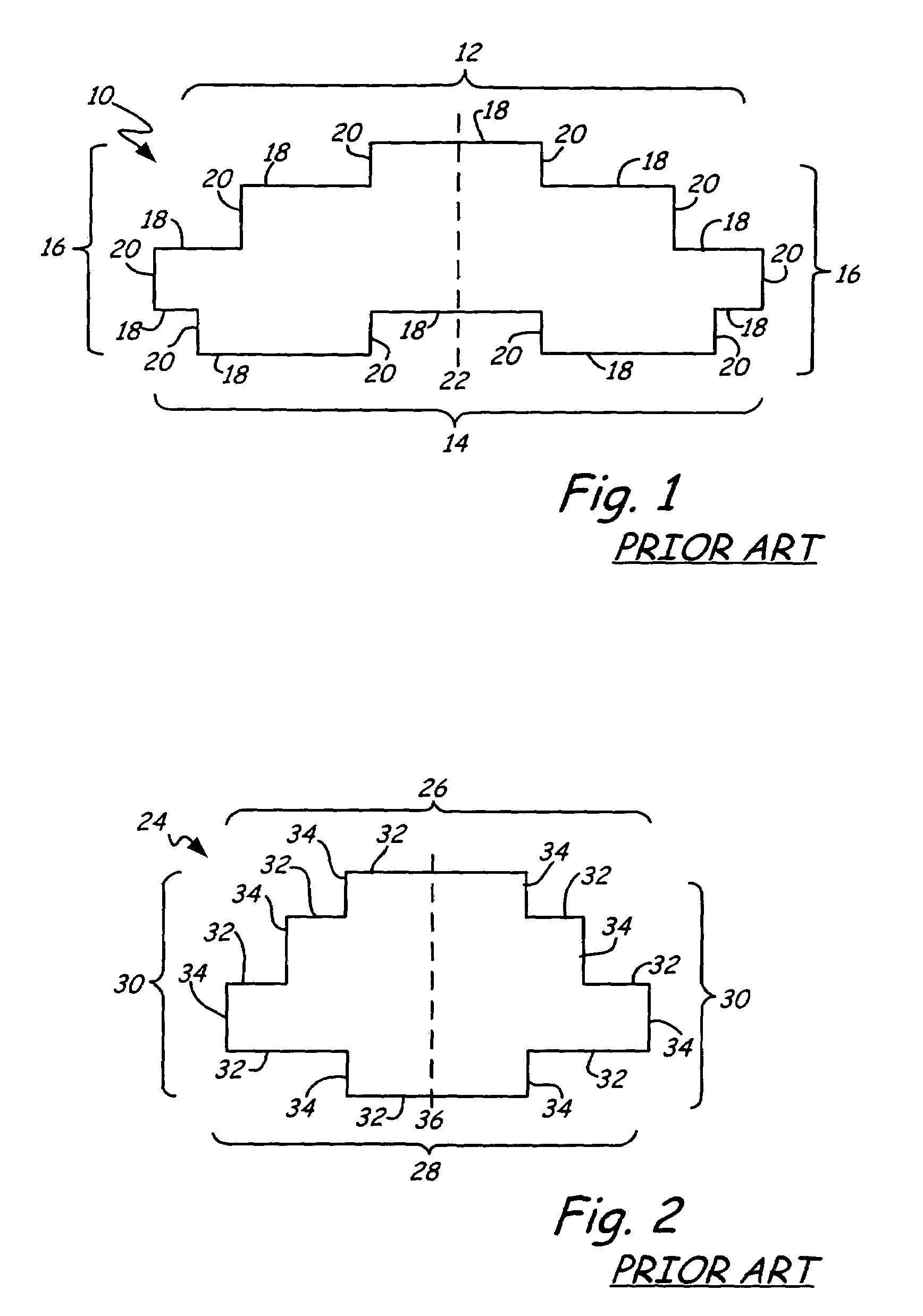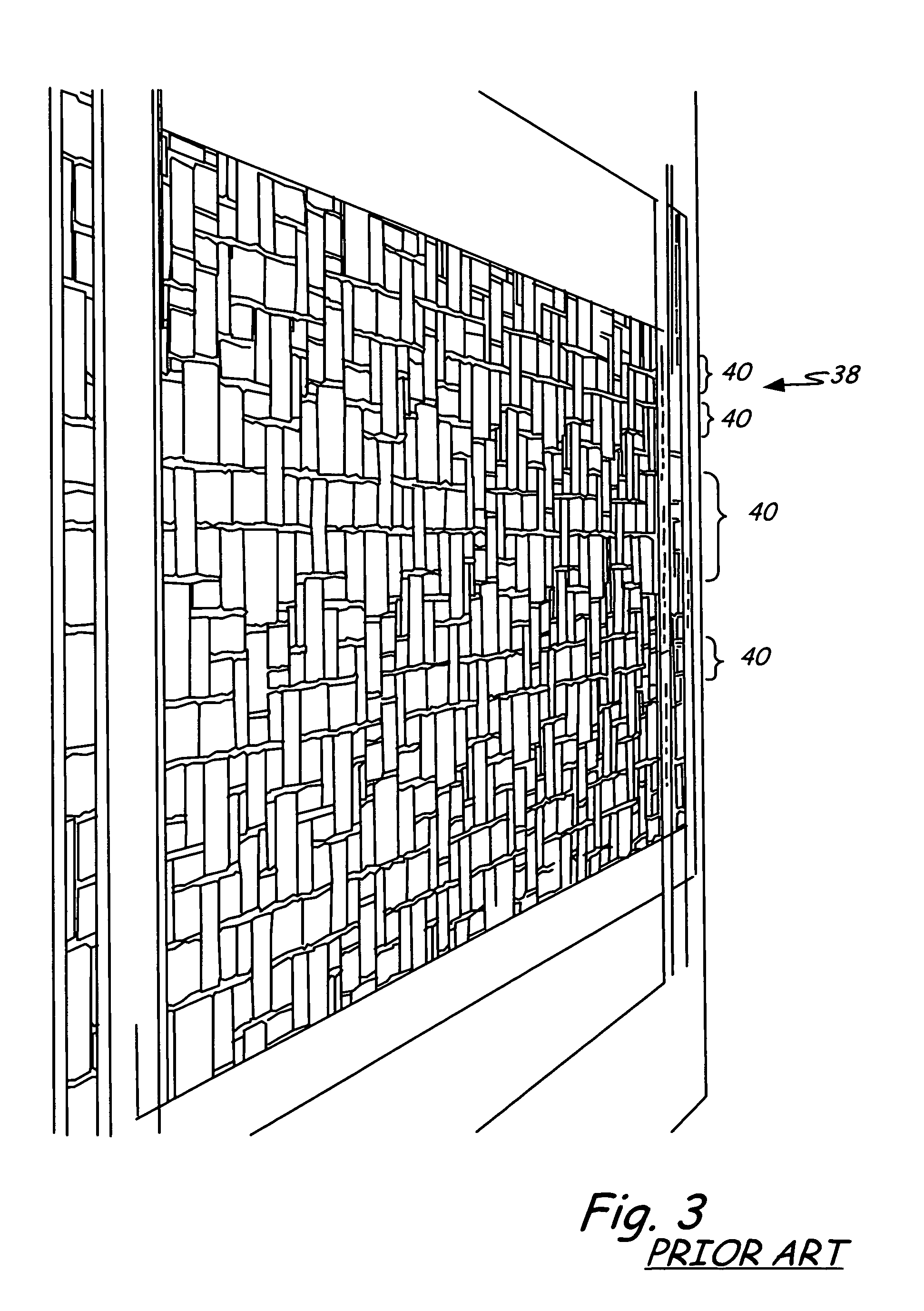Form liner with connection regions having a plurality of linear segments for creating a realistic stone wall pattern
a technology of connecting regions and linear segments, which is applied in the field of wall structures, can solve the problems of high labor intensity, difficult to achieve the effect of forming lines,
- Summary
- Abstract
- Description
- Claims
- Application Information
AI Technical Summary
Problems solved by technology
Method used
Image
Examples
first embodiment
[0032]FIGS. 1 and 2 represent two different embodiments of prior art form liners. FIG. 1 shows a front view of a prior art form liner 10. Prior art form liner 10 comprises top region 12, bottom region 14, and side regions 16 made of twenty horizontal segments 18 and vertical segments 20 connected to each other at ninety degree angles with relatively long linear top and bottom regions 12 and 14. Prior art form liner 10 has an axis of symmetry 22 which results in prior art form liner 10 having “mirror” symmetry.
[0033]When several prior art form liners 10 are placed adjacent to one another to pour a wall, the relatively long linear top and bottom regions 12, 14 tend to align in rows. The rows created by the top and bottom regions 12, 14 may become discernible to the human eye. Repeating patterns which are easily discernible are less desirable because it is more obvious the resulting wall is simulated, rather than made of unique individual components.
second embodiment
[0034]FIG. 2 shows a front view of a prior art form liner 24. Prior art form liner 24 comprises top region 26, bottom region 28, and vertical regions 30 made of sixteen horizontal and vertical segments 32 and 34 connected to each other at ninety degree angles with relatively long linear top and bottom regions 26 and 28. Prior art form liner 22 also has an axis of symmetry 36 which results in prior art form liner 24 having “mirror” symmetry. Though less obvious, the prior art form liners 24 may also cause horizontal rows to appear in a wall formed from several form liners 24 arranged next to each other on a form.
[0035]FIG. 3 is a perspective view of a simulated stone wall 38 constructed from a plurality of prior art form liners similar to those illustrated in FIG. 1. As can be seen in FIG. 3, particularly when the simulated stone wall 38 is viewed from an angle, horizontal lines 40 become visible to the human eye. In part, the horizontal lines 40 are visible due to the generally line...
PUM
 Login to View More
Login to View More Abstract
Description
Claims
Application Information
 Login to View More
Login to View More - R&D
- Intellectual Property
- Life Sciences
- Materials
- Tech Scout
- Unparalleled Data Quality
- Higher Quality Content
- 60% Fewer Hallucinations
Browse by: Latest US Patents, China's latest patents, Technical Efficacy Thesaurus, Application Domain, Technology Topic, Popular Technical Reports.
© 2025 PatSnap. All rights reserved.Legal|Privacy policy|Modern Slavery Act Transparency Statement|Sitemap|About US| Contact US: help@patsnap.com



